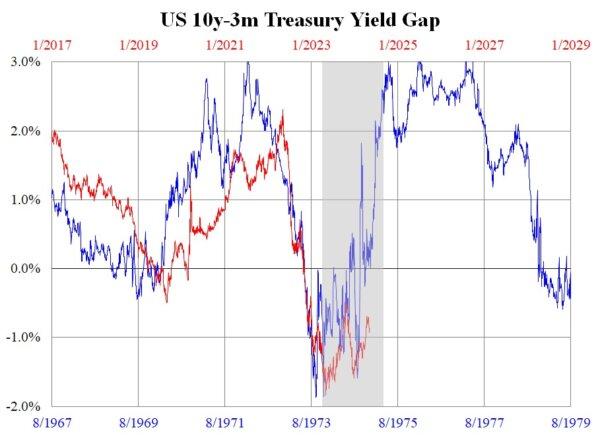Commentary
Last year, we discussed the yield curve predictability of recession. From past experience, yield curve inversion would be followed by a recession in 1.5 to 2 years. However, there is no academic consensus on such timing. Likewise, there is no consensus about the accurate time needed for monetary policy to be effective. Economic theories or models give the mechanism, while exact duration is purely empirical. Academics tend to avoid this kind of issue because the variation is indeed considerable; they tend not to assert something they are not confident in.
However, the issue is important. This is like central bankers, who must have an idea of how far ahead they are targeting in formulating policies, even though academics dare not announce an accurate time range.
Therefore, one has to bear in mind that such a time range is highly uncertain. Back to this example, central bankers never know when and how much of their previous tightening has been realized and how much is still to come. Their data-dependent strategy suggests they are really uncertain about the timing of the outcome.
The same line of reasoning applies to yield curve prediction. Bear in mind that short-tenor yield adheres closely to the policy rate. While long-tenor yield is mostly macro and market-driven, it moves relatively mildly in the process of inversion. Very often, inversion is associated with aggressive rate hikes within a short period of time. Then, the time range that inversion predicts recession is effectively the time needed for tightening to realize the impact on various sectors. Whether inversion truly predicts recession or is merely caused by rate hikes, is not our focus here.

The uncertainty of the timing might be seen from the comparison of the yield gap between now and almost half a century ago (i.e., in 1974). As the accompanying chart shows, the mode and extent of inversion in recent months are highly similar to that in the mid-1970s. As the grey area refers to the recession in that period, if the same applies today, this means we are already in recession and are towards the end of it. However, there is a difference. In the mid-1970s, the yield gap reverted to positive in the middle of the recession, while now the inversion remains intact.
The background differs in one more important aspect. In the mid-1970s, both 10-year and 3-month yields stood at an 8 percent level, while now they are roughly 5 percent. In the mid-1970s U.S. GDP was composed of 30 percent of the secondary industry (goods production), and now it is only 10 percent. The tertiary sector (services provision) is less prone to high interest rates because of the lower gearing (lending) under non-massive production. This explains why, nowadays, a high-interest rate impacts emerging economies (which produce goods) more than advanced ones (which supply services).
Despite all these, the production and services sectors are not disaggregated completely. One side of weakness will transmit to the other sooner or later. Conclusively, the yield curve prediction is likely to be correct again this time, it’s just the timing is taking longer to realize.





